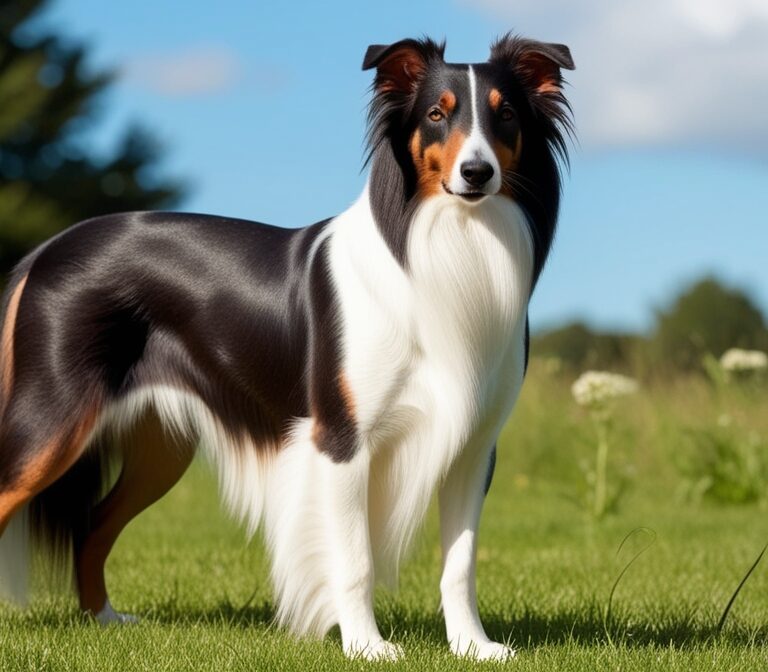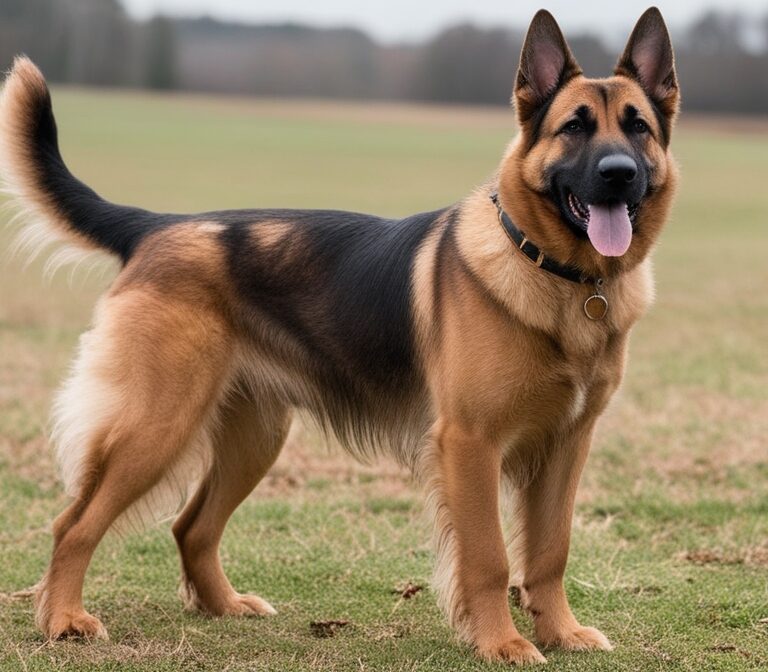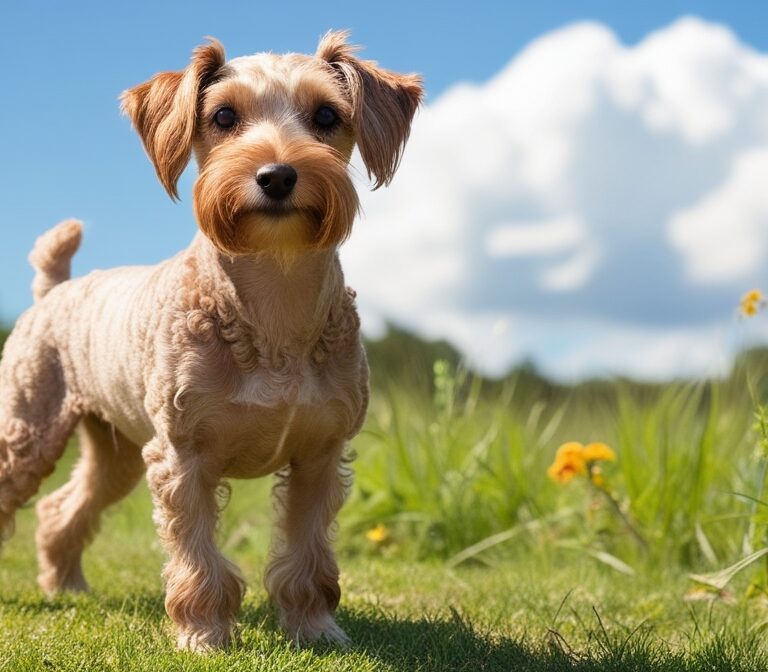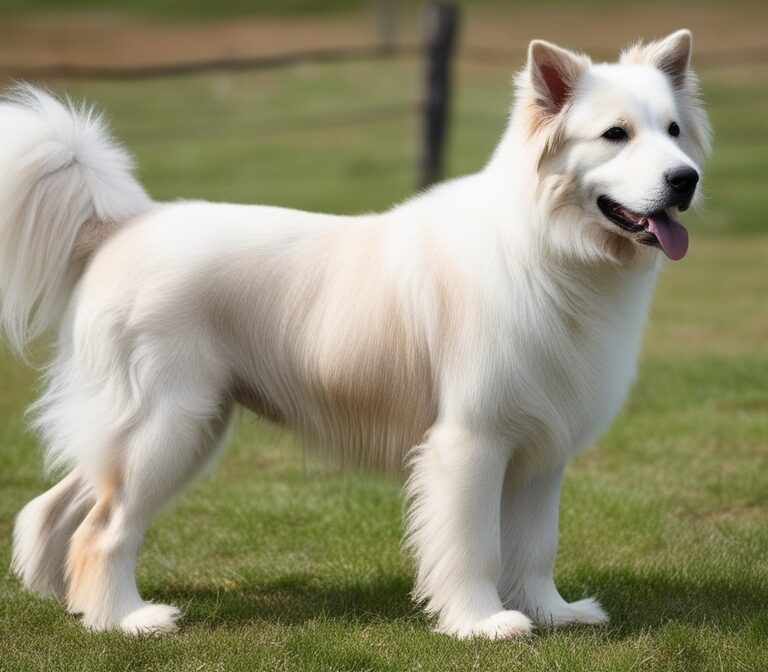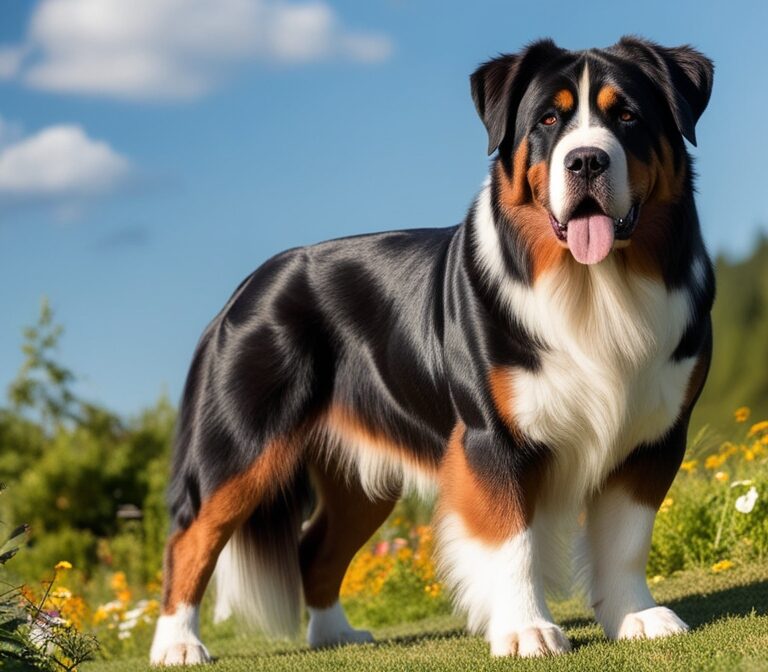The Complete Guide to the Bullmastiff Dog Breed
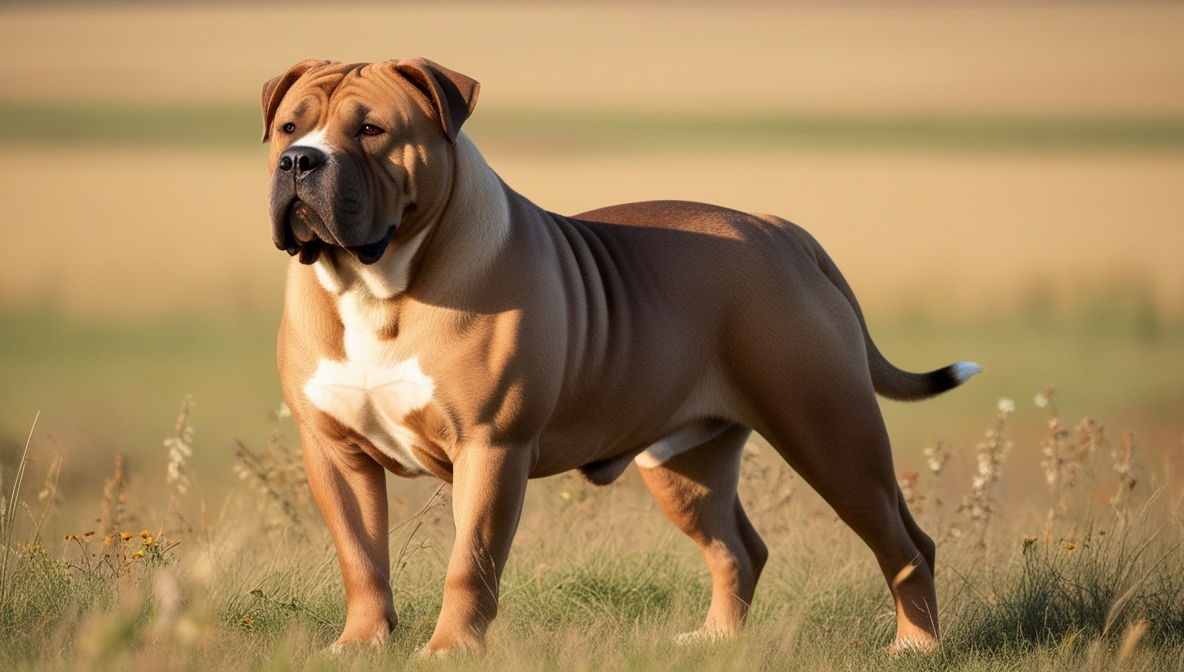
What is a Bullmastiff?
The Bullmastiff is a large, muscular dog breed originally developed in England during the 19th century. Classified as a working dog, the Bullmastiff was bred to assist gamekeepers in protecting estates from poachers. Unlike many guard dogs that rely on excessive barking, the Bullmastiff was designed to silently track, confront, and pin intruders without inflicting serious harm. This instinctive behavior earned it the title “The Gamekeeper’s Night Dog.”
Physically, the Bullmastiff is a powerful and imposing breed, weighing between 50–59 kg for males and 45–54 kg for females. Standing at 61–69 cm at the shoulder, it carries a short, dense coat that comes in shades of fawn, red, or brindle. Its broad head, muscular build, and dark muzzle immediately convey strength and authority. Despite its intimidating presence, the Bullmastiff is often described as a gentle giant when raised in a loving home environment.
Temperamentally, this breed is known for its loyalty, protectiveness, and calm nature. While naturally reserved with strangers, a Bullmastiff bonds closely with its family and becomes deeply devoted and affectionate. With the right training and socialization, it demonstrates excellent patience with children, making it a reliable family protector as well as a companion.
In modern times, the Bullmastiff continues to serve as a guard dog, but it has also gained recognition as a family dog and show dog under organizations like the American Kennel Club (AKC) and the United Kennel Club (UKC). Its balanced temperament, combining strength with gentleness, makes it one of the most versatile large dog breeds available today.
Brief History and Origin of the Bullmastiff
The Bullmastiff’s history traces back to England in the mid-19th century, a time when gamekeepers needed a specialized dog to help protect large estates. At that time, poaching was a serious crime, and wealthy landowners required dogs that could stop intruders without mauling them. Traditional mastiffs were too slow, while bulldogs were too aggressive, so breeders decided to crossbreed the Mastiff with the Bulldog.
The result was the Bullmastiff, which inherited the size, strength, and endurance of the Mastiff along with the tenacity, courage, and determination of the Bulldog. This combination created a dog that could run silently, overpower a human, and hold them down until the gamekeeper arrived. Because of this ability, the Bullmastiff quickly earned its reputation as the perfect estate guardian.
By the early 20th century, the breed became officially recognized by kennel clubs. The Kennel Club (UK) recognized the Bullmastiff in 1924, followed by the American Kennel Club (AKC) in 1933. These milestones solidified the Bullmastiff’s status as a distinct breed rather than a hybrid cross. Over time, the breed transitioned from a working protector to a companion animal, while still maintaining its strong guarding instincts.
Culturally, the Bullmastiff has also been featured in films, books, and even law enforcement roles, emphasizing its enduring image as both a protector and loyal companion. Today, while it may no longer be a staple for gamekeepers, the Bullmastiff remains one of the most respected guard dog breeds, valued for its courage, loyalty, and adaptability.
Physical Characteristics of the Bullmastiff
The Bullmastiff is a giant dog breed recognized for its muscular build, broad chest, and powerful stance. Its physical appearance is both intimidating and elegant, making it easily distinguishable from other large dog breeds. Males typically weigh 50–59 kg, while females range from 45–54 kg. In terms of height, they stand 61–69 cm at the shoulder, giving them an imposing presence without being overly massive like the English Mastiff.
The head is one of the most defining features. It is broad and square-shaped with a pronounced stop (the area where the forehead meets the muzzle). The muzzle is dark and short, accounting for about one-third of the skull’s length. This structure contributes to the Bullmastiff’s strong bite force, which was originally intended to hold but not injure intruders.
The eyes are dark and medium-sized, reflecting an alert yet calm expression, while the ears are V-shaped, set high, and carried close to the cheeks. These features combine to create a watchful but approachable look, emphasizing the breed’s role as both a protector and companion.
The coat of the Bullmastiff is short, dense, and weather-resistant. It requires minimal grooming compared to long-haired breeds, but regular brushing helps maintain its shine. Standard colors include fawn, red, and brindle, with black markings often appearing on the muzzle and around the eyes. These darker facial features enhance the breed’s protective appearance.
Despite its bulk, the Bullmastiff is surprisingly agile and athletic. Its strong legs and compact body structure allow it to move quietly and swiftly, an inherited trait from its early role as the gamekeeper’s night dog. Unlike some giant breeds prone to sluggishness, the Bullmastiff maintains a balanced energy level—active when required, yet calm and relaxed indoors.
Temperament and Personality Traits
The temperament of the Bullmastiff is one of its most celebrated qualities. Known as the “gentle giant”, the breed balances courage with calmness, making it a reliable family protector. Unlike overly aggressive breeds, the Bullmastiff relies on its natural confidence and strong instincts to evaluate situations, intervening only when truly necessary.
At its core, the Bullmastiff is loyal and affectionate. It bonds deeply with its family members and thrives on being part of household activities. With children, it is usually gentle and patient, tolerating play but always maintaining a watchful eye. However, due to its size and strength, supervision is recommended when the dog interacts with small children to prevent accidental knocks or bumps.
The breed is naturally protective and territorial, which makes it an excellent guard dog. While not prone to unnecessary barking, the Bullmastiff will alert its owners to potential threats and stand its ground fearlessly if danger is perceived. Early socialization with people, pets, and different environments is critical to ensure these protective instincts remain balanced.
Unlike some working breeds that require constant activity, the Bullmastiff has a calm indoor demeanor. It enjoys lounging with family members but also needs moderate daily exercise to stay healthy and prevent boredom. This temperament makes it suitable for families living in houses with yards, but it can also adapt to apartment living if exercise needs are met.
An important aspect of the Bullmastiff’s personality is its independence. While it can be affectionate, it does not crave attention 24/7 like some companion breeds. Instead, it demonstrates a quiet confidence, showing affection in subtle yet consistent ways. This makes it a good match for families seeking a protective but low-maintenance guardian.
Development of the Bullmastiff in 19th Century England
The Bullmastiff was purposefully developed in England during the mid-19th century, a period when poaching was rampant on large estates. Wealthy landowners and gamekeepers needed a dog that could patrol estates silently, detect trespassers, and detain them without inflicting fatal injuries. Existing breeds did not fit the requirement—Mastiffs were too slow, while Bulldogs were too aggressive.
To address this, breeders began crossing 60% Mastiff with 40% Bulldog, eventually stabilizing the mix into a distinct breed known as the Bullmastiff. This new breed inherited the Mastiff’s size, endurance, and protective instincts, along with the Bulldog’s determination, speed, and courage. The combination was so successful that Bullmastiffs became known as the “Gamekeeper’s Night Dog.”
Unlike hunting dogs that chased prey or sheepdogs that herded, the Bullmastiff specialized in human apprehension. Its job was not to kill but to restrain intruders until its master arrived. This unique role demanded a dog that was intelligent, obedient, and highly trainable, qualities that remain central to the breed today.
The breed’s reputation grew quickly across England. By the late 19th century, Bullmastiffs were being used not only on estates but also in law enforcement roles. Their reliability and silent guarding ability made them invaluable in protecting property and deterring criminals.
In 1924, the Kennel Club (UK) officially recognized the Bullmastiff as a purebred dog, followed by the American Kennel Club (AKC) in 1933. This recognition transformed the breed from a purely working animal into a show dog and family companion, broadening its appeal worldwide.
Is the Bullmastiff the Right Dog for You?
The Bullmastiff is a breed that embodies both power and gentleness, making it one of the most respected large dog breeds in the world. With its origins as the Gamekeeper’s Night Dog in 19th-century England, it carries a strong legacy of loyalty, protection, and quiet confidence. But while its role as a guard dog remains deeply embedded in its instincts, the modern Bullmastiff is also a devoted family companion that thrives when treated with affection and respect.
This breed is best suited for owners who understand the responsibilities that come with a giant working dog. Its size, protective instincts, and independent personality require an owner who can provide firm but loving leadership, consistent obedience training, and early socialization. Families with young children will find the Bullmastiff to be a gentle, watchful protector, but supervision is always recommended given its strength and bulk.
From a care perspective, the Bullmastiff does not demand excessive grooming, but it does require moderate exercise, a balanced diet, and regular veterinary check-ups to prevent common health issues such as hip dysplasia, bloat, and cancer. Prospective owners should also be aware of its relatively short lifespan of 7–10 years, which is common among giant breeds, but emotionally challenging for families.
Financially, owning a Bullmastiff involves notable costs: high-quality dog food, health care, training, and insurance can easily add up to thousands of dollars annually. However, for those who are prepared, the reward is a faithful guardian and companion that will remain by your side through thick and thin.
In terms of adaptability, the Bullmastiff can live in both houses with yards and apartments, provided it receives enough physical activity and mental stimulation. Unlike hyperactive breeds, it has a calm indoor demeanor, making it a surprisingly good choice for families in urban areas.

